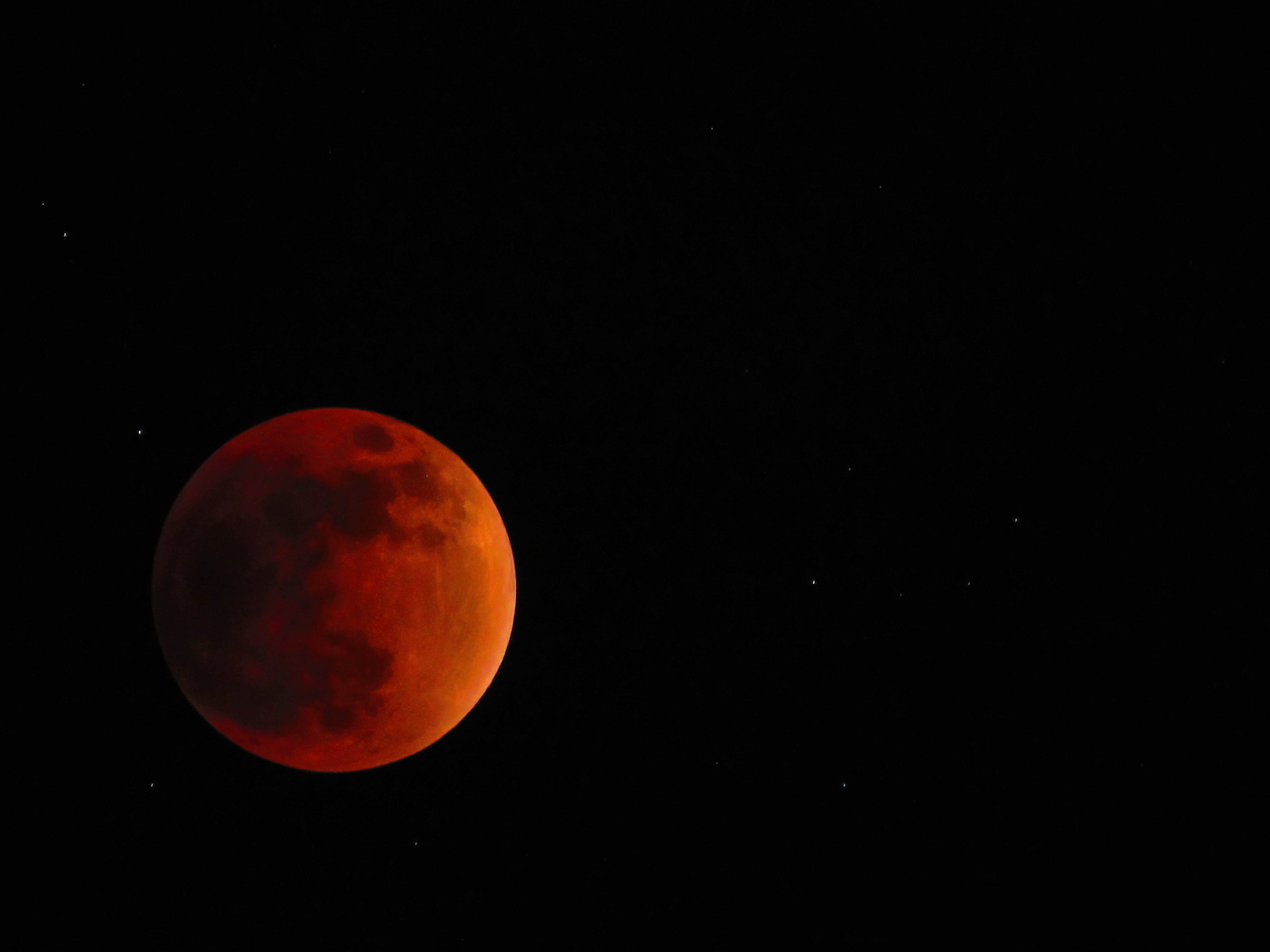How To See The ‘Blood Moon’ Lunar Eclipse Next Week
3:52 minutes

Early on Friday, March 14 (or super late on Thursday, March 13, depending on your time zone) people across the U.S. will be able to watch a total lunar eclipse, if skies are clear. The partial eclipse will begin at 1:09 a.m. Eastern time on Friday the 14th, with totality lasting from 2:26 to 3:31 a.m. Eastern.
Astronomer Dean Regas joins Host Flora Lichtman to tell us what to expect, and share some tips for comfortable lunar eclipse viewing.
Invest in quality science journalism by making a donation to Science Friday.
Dean Regas is an astronomer and host of the “Looking Up With Dean Regas” podcast. He’s based in Cincinnati, Ohio.
FLORA LICHTMAN: We’ve been talking about the moon, and here is a lunar event we can all take part in without building our very own moon lander. On the horizon is a total lunar eclipse. Here to tell us more is astronomer Dean Regas, host of the Looking Up podcast. Welcome back, Dean.
DEAN REGAS: Glad to be here.
FLORA LICHTMAN: When is this total lunar eclipse happening?
DEAN REGAS: Yeah, there’s a little confusion about that because it’s technically on March 14, but it’s really the night of the 13th into the early morning hours of the 14th. And, best of all, it’s going to be visible from all across the country.
FLORA LICHTMAN: So next Thursday, Thursday night?
DEAN REGAS: Basically, yeah. So either you’ve got to stay up all night past midnight or set an alarm and get up a little bit earlier, but the whole thing kicks off at about 1:09 AM Eastern Time, and that’s when the shadow of the Earth that first appears on the moon. And then it slowly eats away the light on the moon as the shadow sweeps across. And then once it’s in totality, when it’s all the way into the shadow of the Earth, that’s when it turns that eerie reddish, orangish colors and gives it the nickname the blood moon.
FLORA LICHTMAN: The blood moon. I love the lingo around eclipses. What does it look like, exactly, during totality?
DEAN REGAS: Yeah, totality, it doesn’t disappear. The moon is still visible. That’s because light is still getting to the moon. It’s just bending through the Earth’s atmosphere. So when you have this lunar eclipse happen, you have the sun on one side, the moon on the other side, and the Earth directly in between the two. So the sunlight will be mostly blocked by the Earth, but a little bit of it kind of bends through the Earth’s atmosphere, and that’s what projects on to the moon, giving it that weird little reddish color.
FLORA LICHTMAN: So I saw the total solar eclipse, and it was an amazing experience. And I remember other people having these really ecstatic experiences. Does a total lunar eclipse deliver in the same way?
DEAN REGAS: Well, for me it does, but I’m a little strange. This is going to be my 22nd lunar eclipse that I’ve seen, and each one is really memorable to me. But for me, there’s two main parts of a lunar eclipse that get me excited, at least. And that is, number one, the beginning. So right when the Earth’s shadow appears on the surface of the moon, that’s the part I really like. So that’s like the kickoff. This thing’s really happening.
And then the other part is totality. And so when we’re in totality, that’s going to be about 2:26 AM to 3:31 AM Eastern. And that one is just more kind a– you kind of sit back and relax and watch it. And what’s so fascinating is the colors on the surface of the moon change every couple seconds. And so you look at it once. It has a different color. You look at it again. It slowly morphs. So yeah, I mean, I’m going to be cheering and howling and everything, but it’s definitely less exciting/dramatic as a total solar eclipse.
FLORA LICHTMAN: Your neighbors are going to call the police.
DEAN REGAS: Yeah, well, they’re used to me being up late at night–
FLORA LICHTMAN: They know you.
DEAN REGAS: –looking through telescopes, yeah.
FLORA LICHTMAN: Can people everywhere see it? Hawaii, Alaska? We have listeners everywhere.
DEAN REGAS: It’s going to be visible from coast to coast. So mainland US, Canada, pretty much all of the Western Hemisphere will be able to see this. In Hawaii, you’re going to just miss the beginning of it, but you’ll have plenty of time to see totality, and same with Alaska. So everybody from coast to coast in all 50 states, you’ll be able to see totality.
FLORA LICHTMAN: All right, everybody, mark your calendars for the total lunar eclipse late March 13 slash very, very early March 14. Thank you, Dean.
DEAN REGAS: Hey, my pleasure. Keep looking up.
FLORA LICHTMAN: Dean Regas is an astronomer and host of the Looking Up podcast, and he’s based in Cincinnati.
Copyright © 2025 Science Friday Initiative. All rights reserved. Science Friday transcripts are produced on a tight deadline by 3Play Media. Fidelity to the original aired/published audio or video file might vary, and text might be updated or amended in the future. For the authoritative record of Science Friday’s programming, please visit the original aired/published recording. For terms of use and more information, visit our policies pages at http://www.sciencefriday.com/about/policies/
As Science Friday’s director and senior producer, Charles Bergquist channels the chaos of a live production studio into something sounding like a radio program. Favorite topics include planetary sciences, chemistry, materials, and shiny things with blinking lights.
Flora Lichtman is a host of Science Friday. In a previous life, she lived on a research ship where apertivi were served on the top deck, hoisted there via pulley by the ship’s chef.